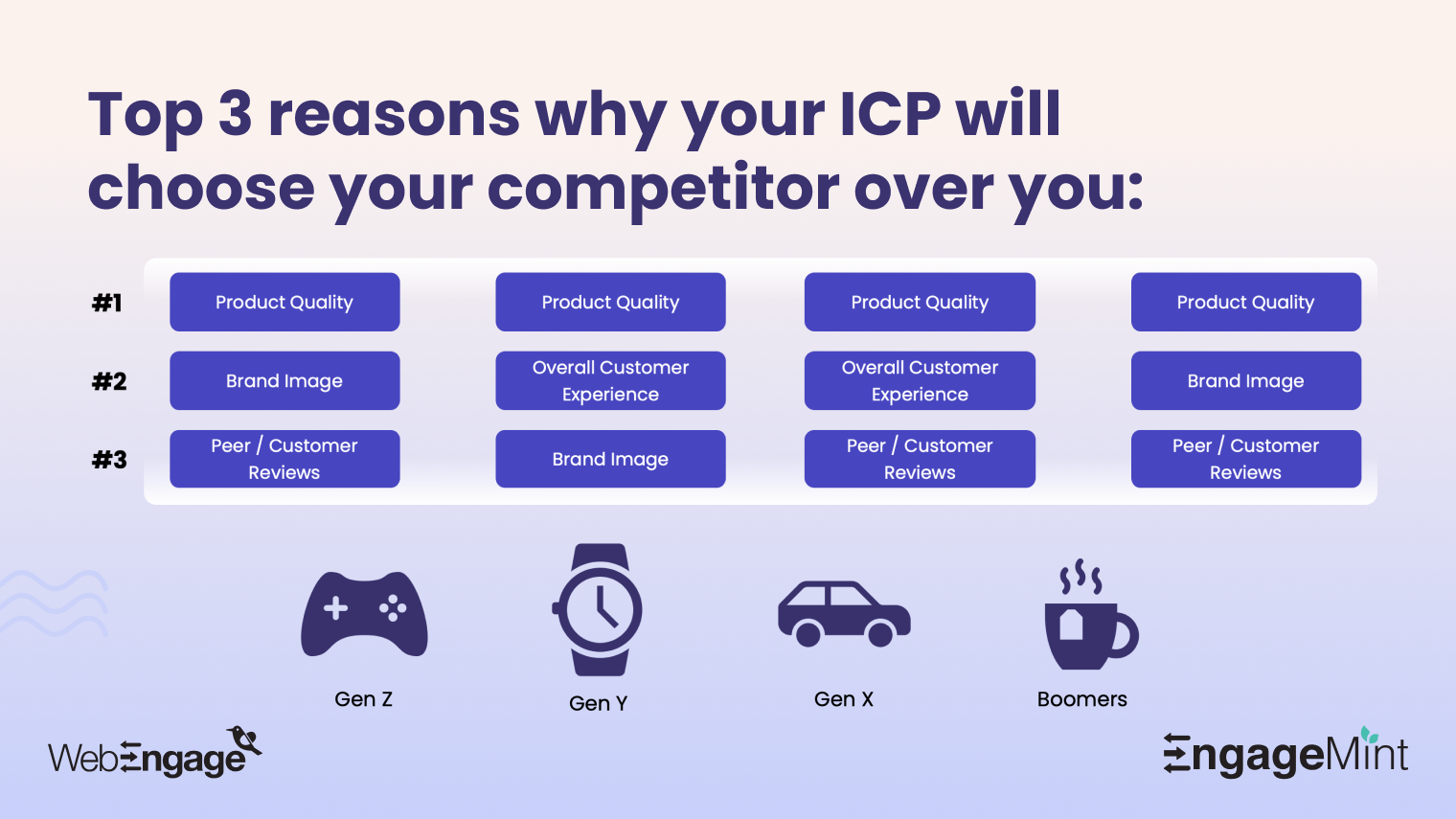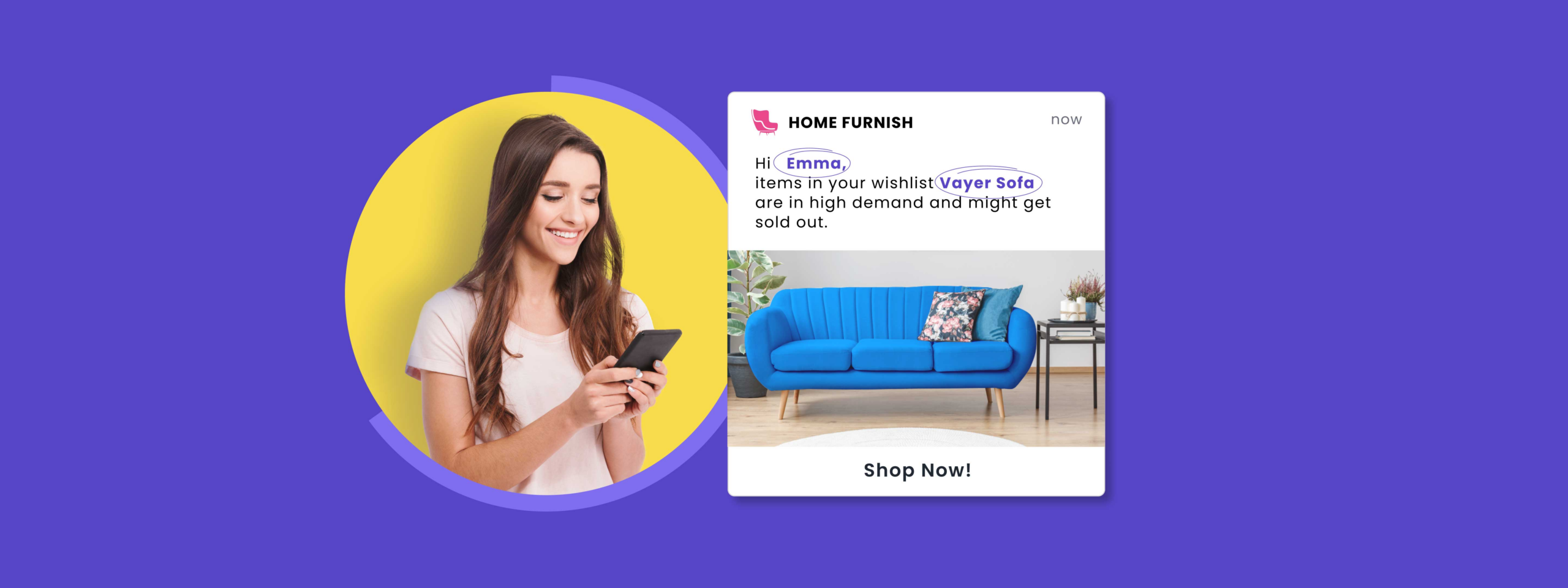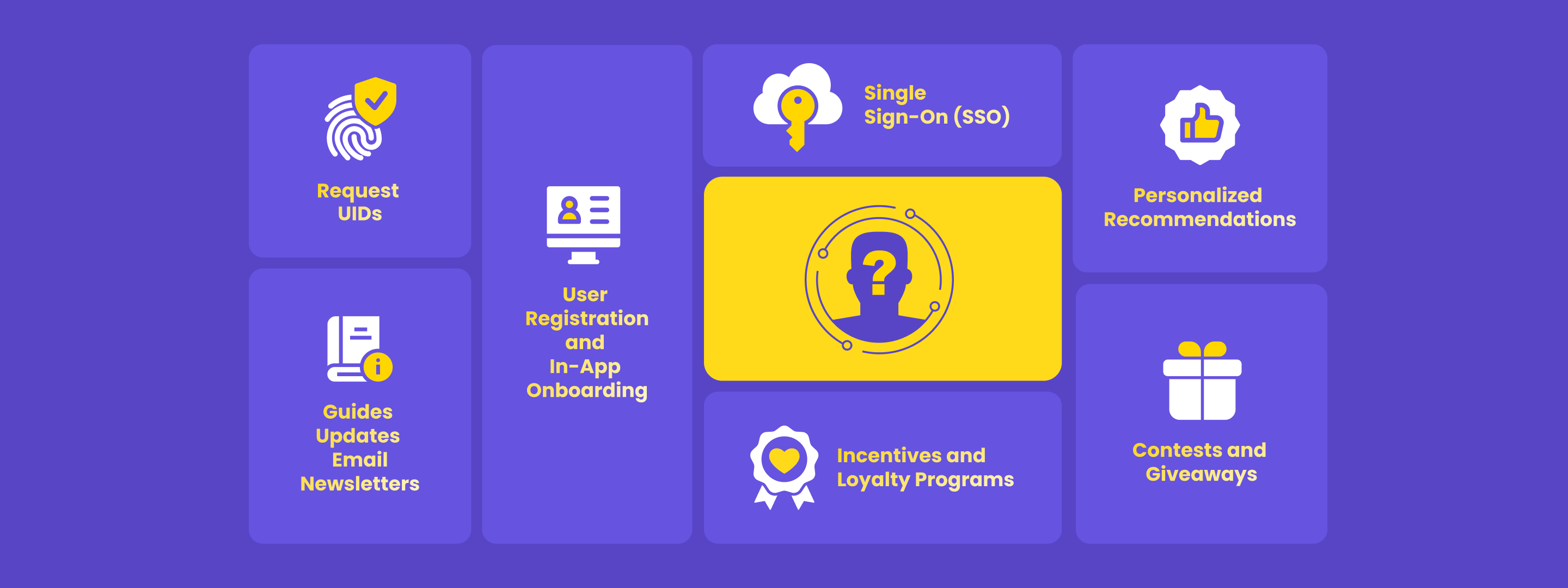Amidst the cluttered e-Commerce landscape, modern consumers appreciate businesses that recognize them. That’s made e-Commerce brands to be on a constant hunt to sustain customer relationships. And one strategy that piques customers’ interest in products while improving their shopping experience is web personalization.
Personalization has become a standard practice that most customers expect in online shopping.
Over 63% of consumers will stop purchasing from brands that use poor personalization tactics, suggests a survey.
Automated and contextual personalizations are predicted to become valuable tools for e-Commerce businesses in 2023. But does personalization apply to communication alone?
Your website is a common first point of contact that your customers engage, interact with, and buy from. So website personalization is an equally critical factor that every e-Commerce business must employ.
This article takes you through the best e-Commerce web personalization strategies to help kick off your sales.
What is web personalization for e-Commerce, and why is it important?
In simple terms, e-Commerce personalization aims to let customers feel special by syncing their needs and shopping experiences. It is based on the users’ rich data and past purchase dynamics.
And e-Commerce web personalization is not any different. It involves personalizing product recommendations on your website and creating dynamic, relatable content to build customer loyalty and increase sales.
Here’s what makes web personalization a must-have for e-Commerce businesses:
- Improve conversions — An interactive, fun website can lead to more high-quality conversions.
- Increase sales — Product recommendations as part of your personalization strategy boosts up-selling and cross-selling of products, thereby increasing sales.
- Elevate user experience — Nothing makes your consumers happy more than a seamless shopping experience. Consumers remember you by the incredible experience you offer them. And personalization guarantees this.
Now that we’ve established the importance of web personalization, let’s explore the strategies you need to skyrocket your e-Commerce sales.
9 strategies for e-Commerce web personalization with examples
1. Display personalized product recommendations
Product recommendations must show shoppers a list of similar previously purchased products or ones they’ve shown interest in.
Such dynamic website content is part of web personalization that your shoppers’ browsing history must inspire. So suggest products on your product pages to notice a significant change in conversions.
Offering tailored product recommendations leverage opportunities to up-sell or cross-sell products. These often result in high-margin profits and are pretty popular for e-Commerce brands.
For instance, utilizing Amazon’s recommendation system can help drive more sales if you’re selling high demand products like shirts. By suggesting related designs or complementary items like accessories, you can increase the likelihood of repeat purchases and boost your visibility.
Amazon does it best by creating different product recommendation categories, such as products to purchase again, based on users’ wish lists, and to push repurchases:

2. On-site notifications
Website notifications are a subtle yet effective way to engage your site visitors.
On-site notifications appear floating on a screen and instantly capture a visitor’s attention. So to stand out, ensure adding a touch of personalization to on-site notifications.
Make this strategy extra optimized by customizing on-site notifications for each visitor and letting them resonate with your messaging. Behavioral analysis of real-time user data along with predictive segmentation on WebEngage makes this feasible.
Zivame, India’s leading lingerie business, saw a 19% increase in their click-through rate using on-site notifications.

How was this possible? Say a user browses a product but abandons it for 30 minutes. A web push message is then sent to check the user’s reachability. If the user is unreachable, the site triggers a hyper-personalized on-site notification based on their profile details.

A couple of notifications help nudge the visitor into finalizing their purchase.
3. Interactive content
As an e-Commerce brand, you have the added advantage of creating targeted interactive content.
Quizzes, games, and surveys, for instance, let you offer better recommendations by understanding your consumers’ intent clearly.
If you’re a fashion brand, you could create an interactive quiz asking your visitor if they want a specific design or style. You can then store their answers to create a personalized recommendation page or guide.
Besides quizzes and games, surveys are an equally, if not more effective, way to understand your visitors’ intent.
Here’s a snippet of a web survey on BoxMySpace:

As a result of such surveys, the brand appreciated over 98% engagement of users. So as soon as a user submitted the survey form, an introductory email was triggered, followed by a few consecutive emails to nurture the lead.
4. Offer shopping assistance
Your customers might belong to various user segments. Each segment may have customers whose style or product preferences could be poles apart, and catering to those individual needs can make a world of difference..
And one efficient way to do this is by offering on-site shopping assistance, which helps users make faster buying decisions. But if you use the same pop-up chat notifications for every user, you’re missing out on better conversions.
Ensure you personalize the pop-up chat messages by understanding customers’ behavior and browsing patterns.
Live agents or AI-powered chatbots assist your customers while browsing to make their shopping experience more personable. They ensure you do not miss out on any concern, complaint, or question. Moreover, they let you in on valuable customer insights like most preferred products, highlighting product quality issues, and shipping delays, if any.
Here’s a snippet of a live agent chat by MyGlamm:

5. Create best seller lists
We’ve all encountered the popular ‘The NY Times Best Seller list’ — a weekly collection of books that sold 5000 or more copies. It’s still a huge deal for authors to get on this list, mainly due to the reader’s attention the tag offers.
e-Commerce businesses can employ a similar concept — creating and publishing best-selling items on their website.
But you don’t have to just display generic best-selling products. You could get extra creative and segment products based on user locations, preferences, age groups, etc. Group your products under a dedicated page for best sellers or create a trending list on your homepage.
Nykaa does it best by showcasing its best-selling/high-demand products right on its homepage:

6. Integrate UGC
User-generated content (UGC) and brand awareness work in tandem. UGC uses your current customers’ voices to build solid credibility.
But most e-Commerce businesses stick to using UGC on social media alone. Showcasing your UGC on your homepage is an excellent marketing strategy that helps new visitors make ‘peer-based’ purchase decisions.
Thus, UGC greatly influences your consumers since they can witness your products in action through people like themselves.
You could also migrate and re-use your existing UGC from social media such as Instagram to your website. Some common examples of UGC are customer reviews, ratings, pictures, videos, and blog posts.
The world-famous furniture store, Ikea, lives on UGC. It has curated multiple lists of UGC to inspire its new shoppers:

7. Retargeting campaigns
Retargeting campaigns for e-Commerce means giving your visitors another shot at purchasing. You could do this through pop-up notifications.
But this in no way means sending back-and-forth notifications to your visitors, as it could reverse-affect engagement.
So a better way to retarget users is by understanding their behavioral triggers and offering intuitive exit intent pop-ups. You could employ FOMO techniques, offering incentives or soft reminders for abandoned carts.
Use automation based on visitors’ site behavior to time and trigger such high-intent pop-ups.
Here’s a snippet where Myntra offers an exclusive discount plus free shipping in the form of a pop-up notification to its first-time shoppers:

Obviously, this offer would not appear for returning customers. So automation paired within-session behavioral analysis, number of user sessions, cart value, etc., are critical to ace your exit intent strategy.
8. Leverage technology for experience
One thing that holds back most customers from purchasing large items online is whether it fits their spaces. And customers face a similar issue while buying beauty products. The question of whether it suits them lingers on.
Augmented reality (AR) has made it possible for e-Commerce businesses to let consumers test out their products using just one thing — their phone camera.
In the case of furniture, AR lets your consumers virtually experience products by pointing their cameras at a nearby surface and superimposing a real-time replica of the product. This way, they can estimate the ideal size and product fit in their living space.
Flipkart, Pepperfry, and Amazon were quick to adopt this latest technology trend.

The beauty and accessories industries, too, are quickly adopting AR. Home-grown brands like Nykaa and Caratlane let consumers try on a cosmetic or accessory virtually using AR.
9. Use relays to target upcoming events
Did you know that you can predict future purchases? It’s possible when you identify repetitive user behavior, such as purchases made during specific events like Valentine’s day, birthdays, and anniversaries, to name a few.
Relays help businesses engage their users based on the occurrence of an event. This is similar to how you’re able to trigger a series of workflow-based communication on emails based on actions a consumer takes on the website.
Marketing automation software lets you trigger messages to specific customers whenever a defined business event occurs. For instance, if a customer bought flowers and cake on the 5th of Feb of the previous year, suggest incentivized options or recommend gifts on the same date each year using relays. This level of hyper-personalization not just helps drive in more conversions, but higher retention rates too.
Bonus Strategy: Leverage consumer psychology and generational marketing
There has been a considerable shift in consumer psychology over the years. For starters, marketing strategies like telemarketing or printed ads are not as effective as modern digital marketing methods.
And as consumers evolve, it’s necessary to get to the bottom of user data and understand consumer psychology.
At the core of understanding consumer psychology is user segmentation. Active users, repeated purchases, and demographics are the most common ways e-Commerce businesses execute their marketing campaigns.
These forms of segmentation work but are heavily reliant on interpretations and do not hit the behavioral dynamic. That’s when generational marketing comes in.
Generational marketing is an advanced form of segmentation that breaks down behavioral patterns based on different generations, like Gen Z, Millennials, Boomers, etc. These segments focus on each generation’s buying patterns, likes, dislikes, and more.
For instance, if you’re marketing for Gen Z and Millennials, they might be more driven towards social media or on-site/push notifications, while for Boomers, it could be traditional advertising like TV ads.
Here’s a glimpse at how generational targeting also refers to different purchase motivations:

Conclusion
As businesses gear toward leveraging technology and staying relevant, e-Commerce giants like Amazon have only upped user expectations.
Appealing to audiences has been the crux of e-Commerce marketing strategies time and again. And personalization leads the path.
The only way to personalize, as website cookies are facing a slow death, is by leveraging valuable data for personalization.
As we gravitate towards a cookieless world, WebEngage brings you a powerful personalization engine to optimize your website and usher in more conversions.
Automate such targeted campaigns for future use by tying in web personalization, or alternatively using WebEngage’s 12+ channels to personalize your communications and make way for easier contextual communication.


































 Dev Iyer
Dev Iyer
 Kasturi Patra
Kasturi Patra




